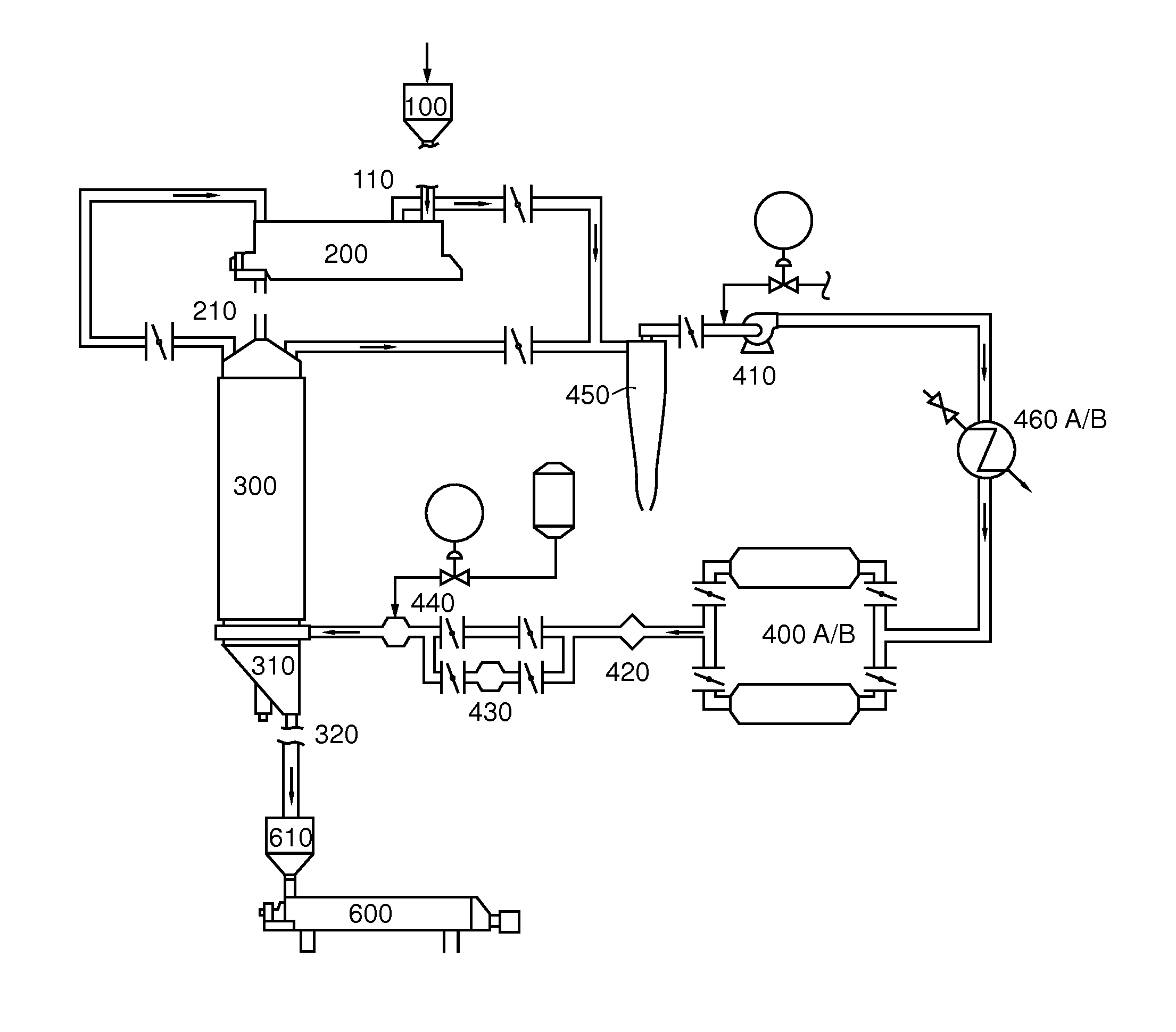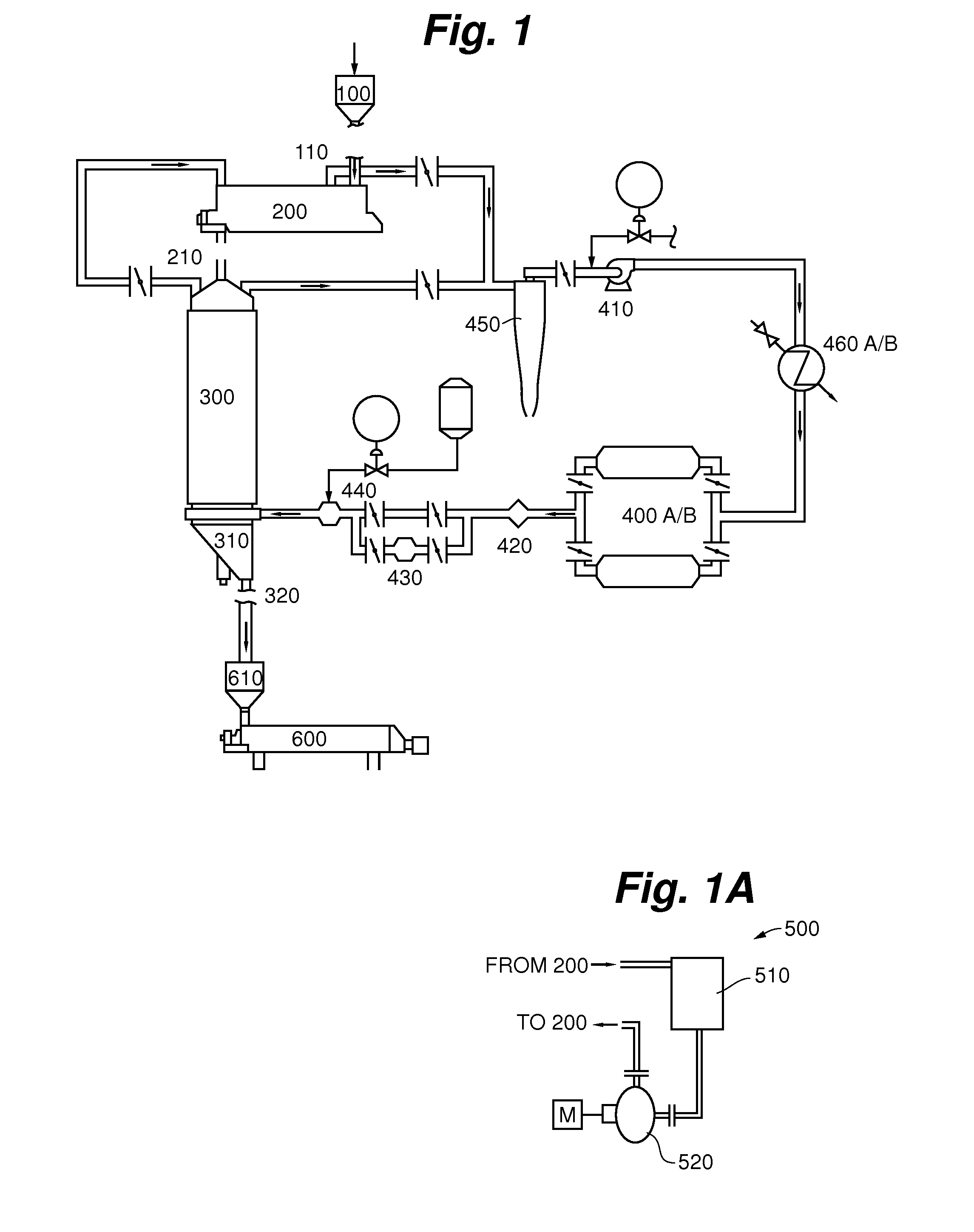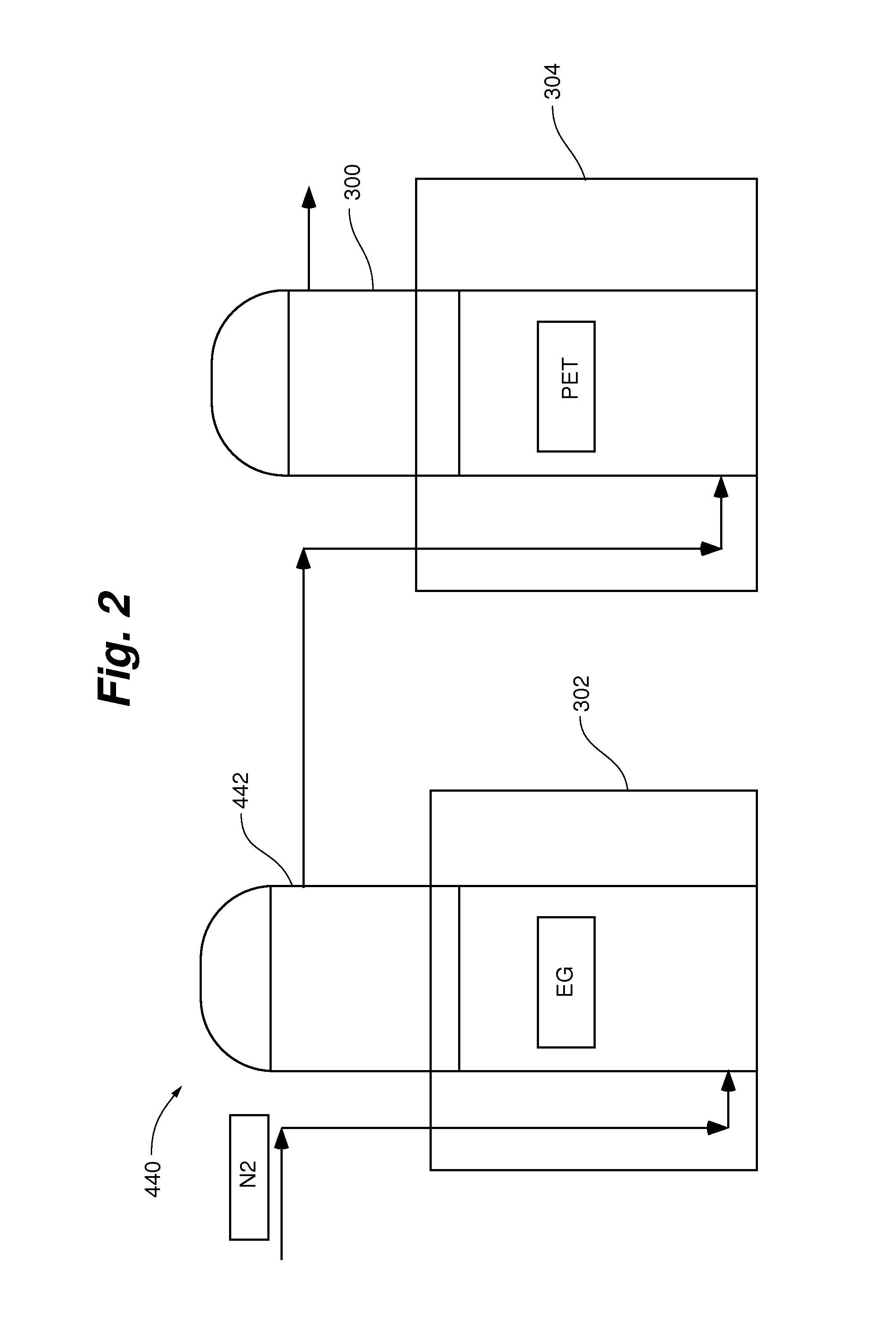Vapor phase assisted post-consumer polymer processing apparatus and method
a polymer processing and vapor phase technology, applied in the direction of chemistry apparatus and processes, dyeing process, chemical/physical/physical-chemical processes, etc., can solve the problems of increasing energy consumption, difficult to precisely control, reheating and reextruding steps require additional energy and capital costs, etc., to achieve efficient decontamination and polymerization, reduce energy, raw material, capital costs, the effect of reducing the number of steps
- Summary
- Abstract
- Description
- Claims
- Application Information
AI Technical Summary
Benefits of technology
Problems solved by technology
Method used
Image
Examples
example 1
[0066]In this example, virgin PET flakes were used in Run 1, shown in Table 1. In Run 2, the virgin PET flakes were contaminated with a cocktail containing chloroform, toluene, benzophenone and lindane in hexane. The PET flakes were stirred in the cocktail maintained at 42 deg C. for 15 days and then filtered and rinsed twice with distilled water. The surface moisture was removed by natural evaporation at room temperature. These contaminated PET flakes were labeled as Run 2 and used in a bench scale decontamination under a flow of hot nitrogen.
[0067]The process variables used in the decontamination and SSP process were temperature, treatment time, and EG vapor content in the nitrogen gas stream. The following two levels for each of these variables were chosen: 200° C. and 215° C. for the treatment temperature; 2 hours and 6 hours for the treatment time; and 0 ppm and 2066 ppm for the EG vapor content in the treatment gas. The samples obtained with these combinations of the process v...
example 2
[0069]In this example a single 19 hour continuous pilot scale run was made at a solids feed rate of 45 kg / hr. Non-contaminated post-consumer green flake was passed through the system for 14 hours to achieve steady state. Roughly 43 kg of contaminated clear flake was then introduced to the system, followed by more non-contaminated post-consumer green flake. Samples of the decontaminated clear flakes were taken at both the Solidaire discharge and the Hopper Dryer discharge at 10 min. intervals. The flake was held in the Hopper Dryer at a temperature of 210° C. for a minimum of 4 hours with a counter current flow of hot nitrogen containing 500 ppmw of ethylene glycol vapor resulting in an IV increase from 0.7813 dl / g to 0.8265 dl / g at an SSP rate of 0.0113 dl / g. The SSP reaction rate decreased by 5× due to the presence of the ethylene glycol vapor.
[0070]Three different types of feed flake were used for this example. The first was mostly green flake with some clear flake mixed in. This ...
PUM
| Property | Measurement | Unit |
|---|---|---|
| residence time | aaaaa | aaaaa |
| temperature | aaaaa | aaaaa |
| temperature | aaaaa | aaaaa |
Abstract
Description
Claims
Application Information
 Login to view more
Login to view more - R&D Engineer
- R&D Manager
- IP Professional
- Industry Leading Data Capabilities
- Powerful AI technology
- Patent DNA Extraction
Browse by: Latest US Patents, China's latest patents, Technical Efficacy Thesaurus, Application Domain, Technology Topic.
© 2024 PatSnap. All rights reserved.Legal|Privacy policy|Modern Slavery Act Transparency Statement|Sitemap



